Real Madrid (11/25/03)
Last updated 11/29/03
Okay, so "real" in Spanish doesn't
mean the opposite of "fake", it's in fact "royal". This newly acquired
knowledge made us better appreciate the name of the world-famous
football (um, soccer for our American audience) club. FIFA, the world
governing body for the sport, even named them "the best club in the
history of football"! That's nothing to sneer at, and neither is
Madrid's fame as the home of corridas (bullfights) at the magnificent
Las Ventas bullring on Plaza de Toros -- 22,000 seats, built in 1929
but
you'd think it was a thousand years old, with its moorish architecture
of pink brick and decorative Spanish tile. Add in a lot more beautiful
buildings of all styles and epochs (no unified visual impression
here!), tons of traffic (automobile as well as human), a good amount of
confusion, noise and elbow pushing, much pride taken in Spanish
language and little regard for uneducated foreigners, great food and
drink (but no obvious food supermarkets, we guess everyone eats out),
late nightlife and strong coffee in tiny cups, all this over a base
note
of a deep sense of history, and you got a semblance
of Spain's capital on your plate.
Madrid combines aged history with
top-of-the-line modernity like few other places do. This city still
witnesses annual miracles at its countless churches (say, Monasterio de
la Encarnacion proudly displays the materialization of St. Pantaleon's
blood in a 1600-year-old vial every July 26th), it has working monastic
orders with nuns selling pastries through a door hatch that ensures
their privacy (Convento de las Carboneras), it stages regular
bullfights at the Las Ventas arena (off-season they got a circus
performing there), it even has a haunted house right on a main
thoroughfare: Palacio de Linares. The ghost story goes like so: the
19th-century mansion was owned by a wealthy financier whose son fell in
love with a shop girl. The displeased father sent him off to England
but soon died, at which point his son returned and married his
sweetheart. Later the couple discovered the letter proving that the
girl was the rich man's illegitimate daughter, and therefore husband
and wife were siblings through their father. The case was reviewed by
the Pope Leon XIII who allowed the unfortunate couple to remain
together on condition of being chaste for the rest of their lives...
and now their sad ghosts are supposed to haunt the building. Things
like that somehow merge with utterly modern conveniences (like Internet
cafes at every corner) and annoyances (very heavy traffic with full
disregard to pedestrians' rights) in the lively city of Madrid.
I was somewhat disappointed to
find barely any Moorish architecture in town. It seems that most of the
original buildings in Moorish style were demolished at some point in
the past and replaced by newer architecture of any style imaginable,
from barocco to skyscrapers (well, there's just a few of those, the
city is mostly 4 storeys tall). The most impressive single item of
Moorish legacy was, to me, the bullring Las Ventas which wasn't built
until well into the 20th century... The old town with its labyrinth of
narrow streets is centered around Puerto del Sol (Gateway to the Sun, a
square crowned by a statue of Madrid's favourite king and mayor Carlos
III who contributed a lot to the development of the city, including a
sewage system) and Plaza Mayor (Main Square) which used to house all
sorts of events, from bullfights to dances, and is now occupied by open
markets (Christmas market in this season). By the virtue of staying at
a pension in this area we got to walk a lot on the cobblestone streets
(beware, slippery in the rain), see ancient squares (Plaza de la Villa,
where the present town hall has been located since 1700s, used to be a
market place back in the 10th century), and even discover the world's
oldest restaurant. According to the Guinness book of records, Sobrino
de Botin is the oldest restaurant business in the world, with
continuous inn/diner establishment dating back to 1725! The place still
specializes in typical Madrid dishes such as slow-roasted suckling pig
and baby lamb; having eaten the lamb, we can attest to its
extraordinary tenderness after being roasted in a wood-fired oven for 3
hours. Chicken casserole with vegetables was equally good (actually
more enjoyable to us chicken lovers). Beautiful decor with dark-wood
ceiling beams and wall tiles accentuates the sense of history in this
unique place, where, as the legend has it, the young Goya washed dishes
for a living in 1765. Two centuries later Hemingway dined here, and not
at the neighbouring restaurants, as they scream out to the bypassers
with a crooked pride: "Hemingway never ate here" is a common lure for
English speakers in tourist trap cafes that surround Plaza Mayor. Well,
one has to distinguish oneself somehow in this cutthroat marketplace!
Madrid did not impress me with its
architecture as much as its rival city Barcelona did (no Anton Gaudi
here, alas), but the interior decoration simply blew me away at the
Palacio Real (the royal palace of Spanish kings). The rooms of the
palace, from the imposing dining room to king's study, smoking and
music rooms, are incredibly ornate. You have to believe
me -- I have seen palaces of Russian tsars in St.Petersburg and naively
believed for most of my life that they were the limit to how lavishly
one could decorate a place, but Palacio Real stands two heads above
anything the Russians ever managed.
For instance, the
walls and ceiling of the Porcelain Room are entirely covered with
porcelain pieces in white/green/gold colors that fit together
seamlessly. The king's smoking room is hung with Japanese-style
canvases (made of Chinese (?) silk) and is exceedingly lovely.
Imagine much guilding, tapestries, paintings by Goya and violins by
Stradivarius, marble staircases, encrusted and frescoed ceilings, and
you
have come nowhere close to an impression of Palacio Real. The
pictures below also do not do it justice. These days the palace is used
solely for state occasions (visits of foreign dignitaries, etc.) and
open to visitors as a museum, because the royal family prefers to live
on the outskirts of Madrid.
Talking about palaces... I don't think Palacio Real was half as
impressive on the outside as "Palacio de Communicaciones" (yes, that
means Palace of Communications), i.e. Madrid's main post office. Don't
miss the picture below, this building is an unforgettable piece of
architecture, worthy of royal presence rather than stamps and parcels.
Due to its stunning exterior, and interior to match with lots of
marble, brass and stained-glass skylights, the place has been nicknamed
"Our Lady of Communications" as if it were a cathedral. Having seen
quite a few nice post offices in the United States and elsewhere, I
would venture an opinion that this is the world's most magnificent
building of this purpose. I'd have
to agree with Daria on this point -- it's akin to what Grand Central
Station in New York is for subway (and train stations in general).
What else is Madrid? Lots of
things, really.. hard to describe because it's a hodge-podge city,
impossible to define in a single phrase. There are many parks and
gardens, the main two being Campo del Moro in the west, behing Palacio
Real, and Parque del Retiro in the east. Retiro, which we have walked
in, is very large, very green, and has a beatiful lake (pond?) with
boat rentals, as well as many fountains and statues. One deserves
special attention: El Angel Caido (The Fallen Angel) is the first
sculpture ever dedicated to the devil. It won the first prize at an
international exhibition in Paris in 1878 and now sits on top of a
fountain in Retiro, forever condemning -- or celebrating? -- the
fall of the proud one. Another interesting statue can be found on
Puerta del Sol, hidden behing the horse-mounted Carlos III: it's the
symbol of Madrid, the bear eating the fruit of the madrona tree (see
picture). We do not know the name, or the purpose, of the last
intriguing piece of sculpting art displayed in a picture below: the
statue of a man leaning on the railing. In fact, at first Puneet was
hesitant to have his picture taken with the guy, in case it would turn
out to be a "live statue" -- street performer posing as a sculpture, a
popular trade in Spain. Whatever the reason behind it, it's a pretty
cool thing to come across, as many of our experiences in Spain have
been.
Madrid is also famous for its museums with such impressive art
collections that the city can proudly line up against Paris, Rome and
London. We chose not to visit the Museo del Prado which exhibits old
Spanish artists including Goya, Velazquez and El Greco, or the modern
art collection of the Centro de Arte Reina Sofia, because we felt all
"museumed-out" after a wonderfully educational evening spent at the
Museo Thyssen-Bornemisza. This establishment contains some 800
paintings ranging from Italian religious-art primitives and Gothic
paintings to portraits of early Renaissance, to Italian baroque, to
Dutch interiors and daily-life scenes, to still life, to impressionism,
expressionism, avant-gardes and surrealism, with a lot of styles and
great names in between. All works are chronologically arranged, so by
walking through the museum in the proposed order one gets a true lesson
in art history; for an art ignoramus like myself this was a priceless
experience. Although I benefitted
from the experience myself, I still intend to get an "Art history for
Dummies" book whenever I get back home. The museum collection convinced
me of a few things:
1. Although still life as an
art form was interesting in that it deviated from the earlier fixation
on biblical scenes/characters as the subjects of paintings, the
paintings themselves are pretty darn boring. Just how many bowls of
fruit, or vases of flowers can you look at before you stop caring?
2. To get a good appreciation of the vast change in our perception of
"beauty", one only has to compare the emaciated Calvin Klein models of
today with the paintings of beautiful (and quite heavy!) women (some
real, others being gods or nymphs) throughout the centuries.
3. For the most part, I do not understand, or have any appreciation
for, contemporary art (barring some Pop art which is just kinda cool)
-- A white triangle on a white canvas counts as art? I must be in the
wrong field!
Oh yes, have I mentioned that Spanish people seem about as proud of
their language as the French? As a rule, they would not speak English
to you even if they could, unless they absolutely have to, and even
then maybe not. Barcelona was more cosmopolitan in this respect, but
Madrid welcomed us with this sort of conversation at the international
(!!!) counter on the train station: "Habla Inglez?" politely inquire
the foreigners (yours truly), looking with hope at the ticket
salesperson, who laconically responds with a unequivocal "No".
I think Spanish will be next on my long list of languages to learn...
it sounds so impressive, too.
Actually, train issues (both travel and events at the station) provided
some of the most frustrating, and comical, experiences in Spain. One
thing I don't get is why the only trains running from
Barcelona to the French border are so-called "regional" trains which
are like subway trains in terms of their level of comfort but can have
rides which last around 4-5 hours. Also, it was comically frustrating
to try to get reservations from Madrid to Nice (France) at the
International counter mentioned above. The rather helpful clerk brought
up the train info on her computer screen via the Internet (or some sort
of Intranet, but that part is what you'd expect), then proceeded to
find
all sorts of necessary "codes" for the destination, the train number,
and other relevant fields from in a large paper manual. What
is the point of having any sort of computerized system if you still
gotta go look up tons of stuff in a paper manual???
Furthermore, for some reason, they couldn't bring up any information
about the trip after the stop in Barcelona. In a country where nearly
everyone had a cell-phone, many with
video-taking ability and other fancy features, and even the clerk
sitting there was using a cell-phone at times, the one little thing I
can't figure out is why the main train provider in the country can't
set up a system so that it's offices in two major cities (Barcelona and
Madrid) are linked up together? Sounds like the most basic thing that
you'd want in your IT infrastructure (and this problem did exist
because the Barcelona office couldn't tell us information about the
trains departing from Madrid at an earlier point). I guess I got
spoiled by the trains in Germany and Scandinavia where it was even
possible to get online during the train trip...
Pictures

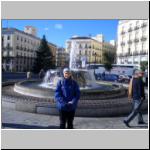

 Views of central Madrid (old town)
Views of central Madrid (old town)
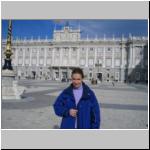
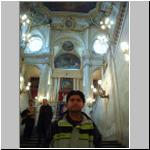
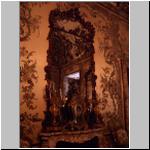
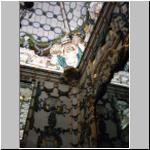 The royal palace: Palacio Real
The royal palace: Palacio Real
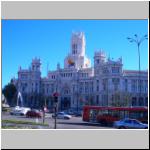
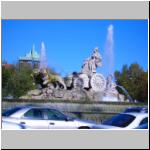
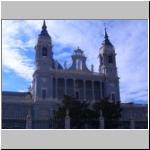
 Other well-known places in the city
Other well-known places in the city

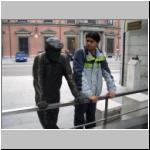

 Great food, good company, and nature...
Great food, good company, and nature...
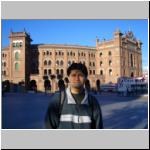


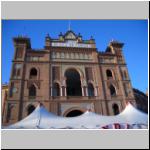 Bullring Las Ventas, home of corridas
Bullring Las Ventas, home of corridas



 Views of central Madrid (old town)
Views of central Madrid (old town)


 The royal palace: Palacio Real
The royal palace: Palacio Real


 Other well-known places in the city
Other well-known places in the city


 Great food, good company, and nature...
Great food, good company, and nature...


 Bullring Las Ventas, home of corridas
Bullring Las Ventas, home of corridas